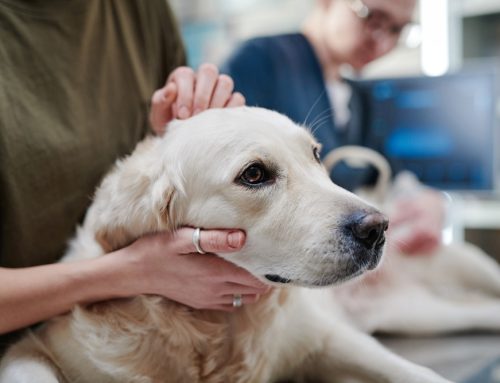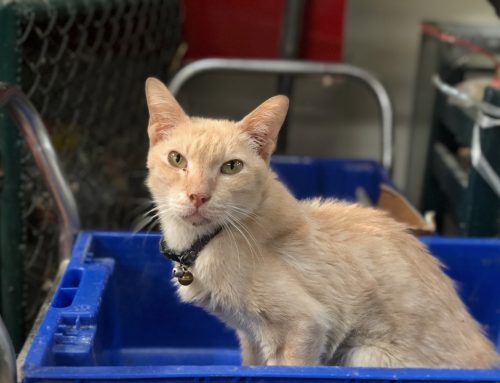Finding out that your pet has kidney failure (i.e., renal failure or insufficiency) can leave you with many questions. Star of Texas Veterinary Hospital wants to ensure you have all the answers you need about the disease, its progression, and available therapies so you can make informed decisions about your pet’s care and quality of life.
Healthy kidney function in pets
The kidneys are responsible for maintaining the body’s delicate chemical balance, or homeostasis, through many vital processes, including:
- Filtering waste products and toxins from the blood
- Reabsorbing necessary components such as red blood cells, minerals, and water as needed
- Excreting toxins and waste products as urine
- Regulating pH and electrolytes to ensure a safe and stable environment for other organs and their processes
- Controlling blood pressure and hydration
When the kidneys are damaged, their ability to accurately filter the blood is impaired, disrupting the body’s equilibrium, creating perpetual dehydration, and causing a chain reaction of stress and strain on other organs.
Acute and chronic kidney failure in pets
Kidney failure is classified as acute (i.e., sudden) or chronic (i.e., long-term) depending on its cause, presentation, and progression.
- Acute kidney failure — Acute failure (i.e., acute renal injury) has a sudden onset and causes rapid deterioration over several days. Toxin ingestion—including medication, antifreeze, plants, and foods—is the most common cause. Other causes include:
-
- Urinary obstruction, such as a stone lodged in the kidney, ureter, or urethra
- Heat stroke
- Snake bite
- Chronic kidney failure — Chronic failure (i.e., chronic kidney disease or chronic renal insufficiency) progresses slowly over months or years and is most common in aging pets. The prolonged decline can make it challenging to identify a cause, which may include:
- Severe dental disease
- Congenital malformation (e.g., renal dysplasia)
- Chronic high blood pressure
- Persistent bacterial infection
- Acute kidney failure
- Age-related deterioration
Kidney failure signs in pets
Unfortunately, unless kidney disease is identified during routine blood work—known as an incidental finding—the earliest signs won’t appear until the kidneys are significantly damaged and functioning at 25 percent to 33 percent of their normal capacity. The earliest noticeable signs are an increase in thirst and urination caused by the kidneys’ inability to concentrate urine. Once the disease progresses to severe stages, signs are more pronounced and often include:
- Loss or lack of appetite
- Lethargy
- Vomiting
- Weight loss
- Decreased grooming and unkempt appearance
- Continued persistent thirst and frequent large volume urination
Diagnosing kidney failure in pets
If you bring your pet to Star of Texas Veterinary Hospital with signs that suggest kidney failure, our veterinarian likely will recommend diagnostic testing in addition to a physical examination. Kidney function tests include blood work to check for elevations in blood urea nitrogen (BUN), phosphorus, and creatinine, and a urinalysis to measure the kidneys’ ability to concentrate urine.
Additional blood work known as a symmetric dimethylarginine (SDMA) test may be advised if early kidney disease is suspected. SDMA can detect kidney dysfunction when the kidneys have only 40 percent functional capacity. While this may not sound like much, each step toward early diagnosis means extra life for diagnosed pets.
We also may recommend ultrasound imaging to visualize the kidneys’ size, shape, and internal architecture. While a kidney biopsy is possible, it does not typically change the outcome or treatment plan and is seldom recommended.
Managing kidney failure in pets
Although kidney failure cannot be cured, therapeutic management can potentially slow its progression and provide your pet with comfort and an improved quality of life. Therapy focuses on minimizing the kidneys’ workload, restoring hydration, improving appetite, and controlling uncomfortable disease signs such as nausea and vomiting. As needed, your veterinarian may recommend treatment strategies, including:

- Hospitalization — Clinically ill pets may require hospital care and intravenous fluids to flush out the kidneys and remove excess waste products from the body.
- Nutrition — Pets should be fed a low phosphorus and low sodium diet to reduce the demand on the kidneys. Unfortunately, these diets are often less palatable and may further reduce a pet’s already poor appetite.
- Hydration — Pets should be encouraged to drink water by providing free access at all times. Cats may respond well to a pet drinking fountain.
- Medication — Your veterinarian may prescribe various medications to manage your pet’s signs, including appetite stimulants, anti-nausea medications, antibiotics, and antacids.
- At-home fluids — Subcutaneous fluids are administered through a needle under a pet’s skin and may be prescribed for supplemental hydration. Fluid therapy is well tolerated by pets and easy for owners to perform after a demonstration and coaching session at the veterinary hospital.
Preventing kidney failure in pets
While it is impossible to completely prevent kidney failure, regular preventive care for your pet—including recommended vaccines, parasite prevention, routine dental cleanings, and maintaining a healthy body weight—may decrease their chances or allow them to live longer after diagnosis. Screening tests such as SDMA, restricting pet access to toxic materials, and staying alert for any changes in your pet’s behavior or routine may allow for early detection and more quality time with your dog or cat.
Kidney failure can be a heartbreaking diagnosis, but it doesn’t always mean the end. Contact Star of Texas Veterinary Hospital to learn how we can help your pet live a longer and happier life with kidney disease.





